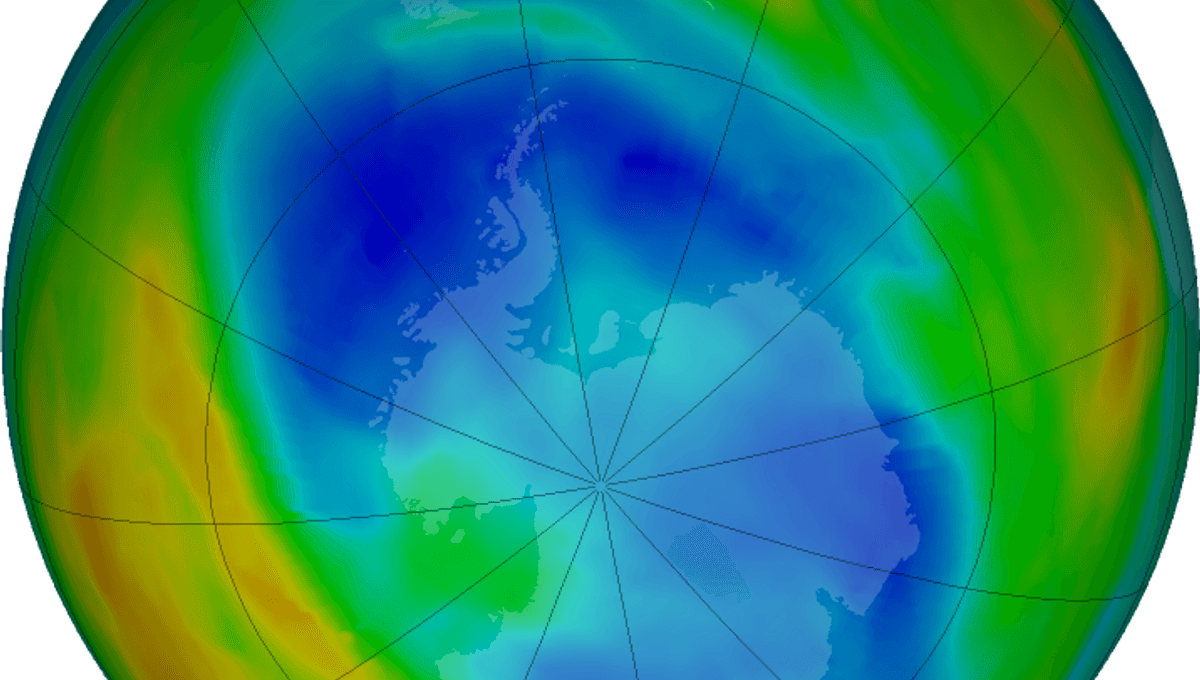
The hole in the ozone layer above Antarctica is strangely large for this time of year, prompting fears that it could lead to further warming of the South Pole. Oddly enough, it looks like this is a consequence of water vapor that ended up in Earth’s stratosphere following the 2022 Hunga Tonga–Hunga Ha’apai eruption, the largest natural explosion on our planet in over a century.
The ozone hole over Antarctica grows and shrinks throughout the year in tune with the seasons. During the Southern Hemisphere spring season (August to October), the hole increases in size, reaching a maximum extent between mid-September and mid-October.
Around this time of year in 2021 and 2022, the ozone hole was practically non-existent and didn’t significantly grow until the end of August. This year, however, data from the Copernicus Climate Change Service shows it has grown much earlier and is forecasted to rapidly expand ahead of schedule.
The ozone layer is a region of the stratosphere between 15 and 30 kilometers (9.3 to 18.6 miles) above the Earth’s surface that has a higher concentration of the gas ozone compared to other parts of the atmosphere. It acts as an invisible shield for our planet, absorbing much of the Sun’s harmful ultraviolet rays.
Read more & stay tuned for more #OzoneInsights in the coming days
👉https://t.co/ImkHEP5yMI pic.twitter.com/xD0ch4ud4Q
In the 1970s and 1980s, scientists discovered a hole in the ozone layer above the South Pole, sparking one of the biggest environmental worries of recent times. It transpired that the layer was being worn away by human-made chemicals, namely refrigerants and solvents, that can act as ozone-depleting substances after they are wafted up into the stratosphere.
Fortunately, the bans on ozone-depleting chemicals proved successful and the layer is well on its path to recovery. Seasonal fluctuations in the ozone hole’s size still exist, though.
The reason behind the unseasonably large hole at the moment might be a knock-on effect of the Hunga Tonga-Hunga Ha’apai volcano eruption which ended in January 2022.
The underwater eruption in the Pacific released energy equivalent to 20 megatons of TNT in five explosions, the largest of which was 15 megatons, making it the largest natural explosion in over a century.
Along with launching heaps of ash and gas, it also pushed an “unprecedented” amount of seawater into the atmosphere. Scientists warned that the excess water vapor could contribute to the degradation of the ozone layer over the next few years – and it looks like their predictions were correct.
The unusually large hole is bad news for the Antarctic, which is already feeling the strain from warming temperatures. Since the ozone layer shields Antarctica from the sun’s UV radiation, the hole could mean that the continent and its surrounding sea are being exposed to more heat.
“The more UV radiation that reaches Antarctica [and] the Southern Ocean means that there is more energy available to melt ice. Now that we have so little sea ice, instead of [reflective] white ice there is very dark blue ocean,” Dr Martin Jucker, a lecturer at the Climate Change Research Centre at the University of New South Wales, told The Guardian.
“There is a risk that the Southern Ocean would then heat up even more and then indirectly melt more ice because the water next to the ice is warmer,” said Dr Jucker.
Source Link: Antarctic's Hole In The Ozone Layer Has Opened Early, Sparking Worry